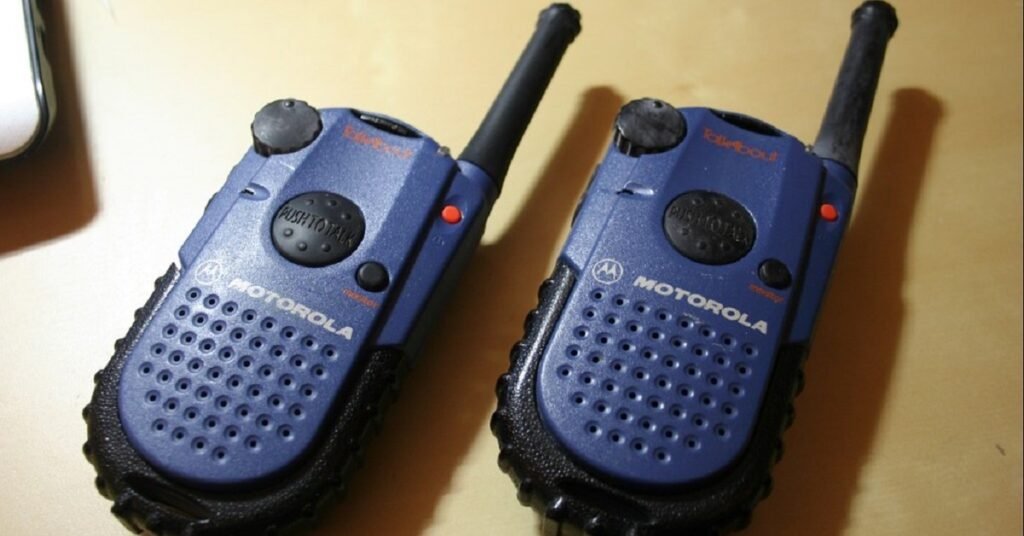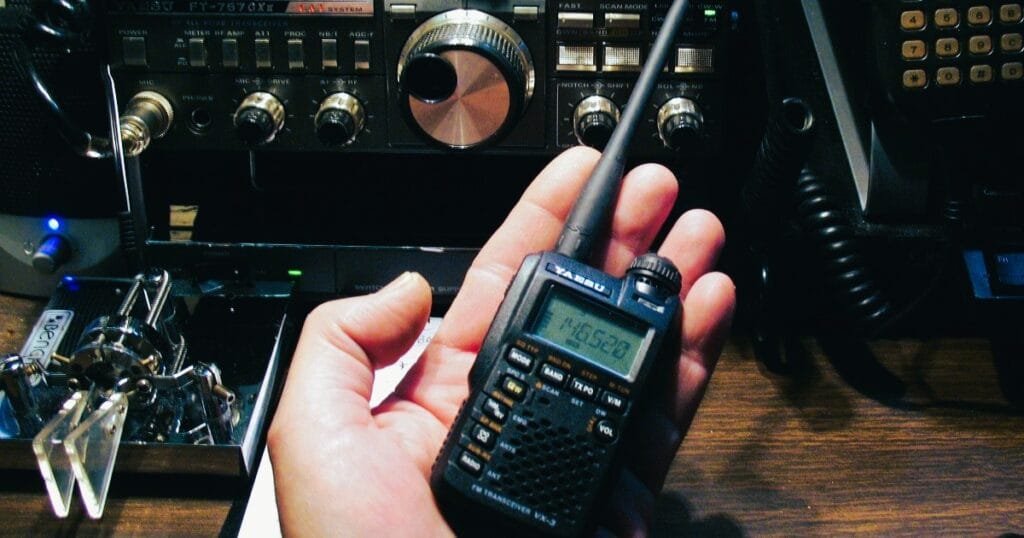Table of Contents
ToggleThe First FRS Channel by Motorola: A Blast from the Past with a Modern Twist
Ah, the Motorola first Talkabout P14SPC03P2AA walkie talkie! Even the name has a familiar ring to it, doesn’t it? If you’re a fan of old technology or simply enjoy devices with a history, this classic item will pique your interest. In this post, we’ll delve further into a ham radio review of the legendary walkie-talkie and its integration with the FRS channel. This isn’t just another gadget review; it’s a look at why the Motorola Talkabout continues to stand out by combining nostalgia with practical FRS channel communication technology.
A Look Back in Time: The Origins of the Motorola FRS Channel
If we want to know a clear concept about why this motorola Talkabout walkie-talkie was that much popular we have to go back a little. Just think about this: the late 1990s all over the headline is the Y2K bug. Technology never changes so rapidly. Amidst all of this, the Motorola Talkabout enters the market, attracting the attention of both tech fans and outdoor adventurers with its FRS channel capabilities.
Back then, the idea of a portable, handheld communication device that did not rely on mobile networks was novel. The P14SPC03P2AA was particularly praised for its dependability in off-grid circumstances, making it ideal for camping trips, trekking excursions, and even casual backyard gaming. It was more than simply a walkie-talkie; it was a device that signified a simpler way of communicating—one without displays, applications, or notifications, yet powered by the FRS channel. As we reflect on this ham radio review, it is evident that the equipment is still relevant today for many hobbyists who seek simplicity through FRS channel communication.
The history of inventing wireless communication devices is also interesting. Don’t forget to click here to learn how we got the modern walkie-talkie and the backstory of inventing this fascinating machine.
Rugged Design with a Touch of Nostalgia
When you first hold the Motorola Talkabout, one thing leaps out: the build quality. This walkie-talkie is made like a tank, withstanding drops, shocks, and even harsh outdoor situations. The design, albeit bulky by today’s standards, communicates strength and dependability. The outside is protected by a strong plastic casing designed to withstand harm. This isn’t your typical contemporary, delicate piece of equipment that breaks after a single fall; it’s the type of gear that can withstand the weather.
The design also evokes nostalgia. There’s something fundamentally pleasant about huge, tactile buttons, which modern smartphones have mostly abandoned. Today’s touch displays may be more sophisticated, but nothing compares the tactile gratification of pressing a huge button to communicate. This sturdy construction is one of the reasons why ham radio enthusiasts continually appreciate the P14SPC03P2AA for its dependability.
But when it comes to modern walkie-talkies, my favorite device is the BaoFeng UV-5R. Learn more by clicking here about this full-featured ham radio in a compact body.
Features That Still Impress in the Modern World

In today’s technologically advanced world, what can a decades-old walkie-talkie provide that is worth revisiting? Surprisingly, quite a bit! Despite its old condition, the Motorola Talkabout still delivers basic functionality. Here’s a thorough rundown that highlights some of the most significant and noteworthy aspects you should be aware of:
Reliable FRS Channel Communication Range
First, let’s speak about range. While today’s smartphones allow for worldwide connection at the push of a button, the P14SPC03P2AA provides a simpler but more dependable communication technique with a range of up to one mile in open regions. For casual users, this is adequate for activities such as hiking, camping, or staying in contact during a neighborhood event. The range may be significantly limited in dense urban or wooded regions, as is typical of most walkie-talkies. According to a typical ham radio review, the Talkabout‘s range compares favorably to newer equipment in similar price ranges.
One of the most common questions concerning range is, how far can I talk with a walkie-talkie or handheld radio? Check here to find out in detail.
Battery Life: Ready for Adventure
Battery life is another crucial component to take into account. So many of us these days are slaves to charging wires, so the Motorola P14SPC03P2AA is a breath of fresh hot air. The thing runs on AA batteries, which is something you can find and swap without thought if your adventures have taken beyond the nearest town. These walkie-talkies are hailed for being light on power instead of heavy, so you don’t have to replace your batteries as often. Which in turn makes them ideal for outdoor adventures where every bit of energy matters. The battery life of the unit is frequently called out as one of its primary attributes in a variety of ham radio reviews.
Already own a ham radio but facing battery draining issues? Check here for some quick troubleshooting tips to solve the problem as soon as possible.
FRS Channel Simplicity at Its Best
The Motorola P14SPC03P2AA is a basic gadget. There is no need to download an app or browse through complicated settings. Simply power on the gadget, push a single button, and start conversing right away. This simplicity is really beneficial, especially in a world saturated with technology that sometimes requires significant setup before you can begin using it. The basic interface ensures that everyone, from youngsters to seniors, can quickly understand how to use it.
Why It’s FRS Channel Is Still Relevant in the Smartphone Age
We live in a time when cell phones have dominated practically all aspects of communication. Why bother with a walkie-talkie in 2024? The solution is found in the beauty of its simplicity, particularly with the use of the FRS channel. The Motorola P14SPC03P2AA provides a novel experience. There are no frequent notifications, no applications that compete for your attention, and no distractions. It’s basically clear, focused communication on the FRS channel. This is a point made in almost every ham radio review of the Motorola first Talkabout.
Furthermore, the gadget shines in regions where current technology may fail, such as off-grid settings where cell towers cannot reach. For example, if you’re deep in the bush on a camping trip, the Motorola P14SPC03P2AA provides dependable communication on the FRS channel when your phone fails. Even in metropolitan locations prone to signal congestion during crises, this walkie-talkie provides a communication channel that is not reliant on external infrastructure—thanks to the FRS channel.
Teaching Tool for a New Generation
Motorola Talkabout Walkie Talkie — for kids, it’s also a learning tool. A creative way of writing to teach kids the basic radio operation in a world full of screens. They’ll enjoy learning how to operate the gadget, and as many parents have mentioned in ham radio reviews, it’s a great method to encourage outdoor play without relying on cell phones. Furthermore, it is an interesting tool for teaching youngsters about disaster preparedness and the significance of consistent communication in times where contemporary technology may fail.
Comparing to Modern Walkie-Talkies: How Does It Hold Up?

The inevitable question is: how does the Motorola P14SPC03P2AA compare to more contemporary walkie-talkie models? Let’s compare the two in several ways:
Build and Durability
Modern walkie-talkies have sleeker designs and use more modern materials like rubberized exteriors and water-resistant components. However, the first Talkabout continues to hold its own. While it lacks sleekness, it compensates with tough, military-style durability. Several ham radio reviews point out that, despite its age, this model may resist tough circumstances better than other modern versions that emphasize design above durability.
Range and Performance
Although contemporary versions can have increased ranges of up to 3-5 miles, the Motorola Talkabout’s 1-mile range on the FRS channel is sufficient for many purposes. Its performance in open spaces is dependable, and the absence of current digital interference on the FRS channel allows for crisper transmissions under certain situations.
Battery Technology
Modern walkie-talkies have a modest advantage in terms of battery life. Rechargeable lithium-ion batteries are already widespread, however the Motorola P14SPC03P2AA uses AA batteries. However, many ham radio reviewers still value the ease of AA batteries, which are widely accessible and can be replenished even when you’re off the grid.
Cost and Value
Finally, one of the most important considerations when comparing antique and current models is pricing. Vintage Motorola P14SPC03P2AA devices are still reasonably priced on resale sites. Many ham radio reviews highlight the excellent value these walkie-talkies provide, particularly given their durability and long-lasting performance.
Final Thoughts: Nostalgia Meets Practicality
The Motorola initial Talkabout Walkie talkies being an example: it bridges the break between your comfort and ease of nostalgia as well since the features from current technologies. It’s more than simply a remnant from the past; it serves as a reminder of how basic and efficient communication gadgets once were, especially with the use of the FRS channel. Whether you’re an outdoor enthusiast, a collector of old technology, or someone looking to impart the wonder of wireless communication through the FRS channel to the next generation, this walkie-talkie provides a delightful yet useful experience.
As many fans have commented in their ham radio reviews, the Motorola P14SPC03P2AA is more than just a tool; it transports you back to a simpler period while yet providing the dependability and durability you require today through the FRS channel.


